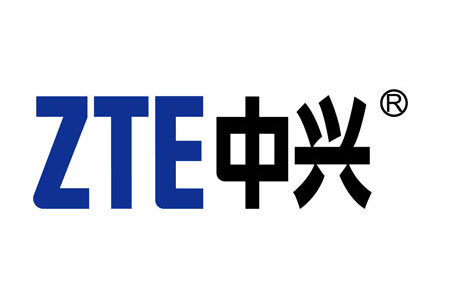


(File Photo)
Government efforts, pressure from US suppliers behind lifting of ban
China's second-largest telecom equipment maker ZTE said Monday that it will strive to ensure that "all operational activities adhere to international trade practices and the laws and regulations of host countries," after the US is reportedly set to lift a ban on the firm that was accused of exporting embargoed US technology products to Iran.
Experts said the thaw in the situation is a result of joint efforts by ZTE and the Chinese government to pressure the US side, which could serve as an example for Chinese companies in future trade disputes in a foreign market.
The US Department of Commerce (DOC) is expected to announce a lift on the export curbs imposed on ZTE later this week, two weeks after the ban was put into place, media reports said on Monday.
"The relief would be temporary in nature and would be maintained only if ZTE is abiding by its commitments to the US government," Reuters reported, citing a senior official at the DOC.
"We are aware of the latest media reports [about the 'temporary relief']," ZTE said in a statement sent to the Global Times Monday, without confirming the lift or elaborating on its commitments to the US.
It said that it has had "constructive discussions" with the US government over the past two weeks.
The DOC was not immediately available for comment on Monday.
'Active communications'
On March 7, the DOC announced export restrictions against ZTE. Under the ban, US suppliers will need to apply for an export license before shipping anything to ZTE, but the license applications generally would be denied, said the DOC.
Manufacturers outside the US would also be prohibited from selling products with a significant amount of US components to ZTE, according to the DOC.
In a following statement, ZTE said that it was "actively" facilitating communications with the US department and may even appeal.
The Ministry of Commerce (MOFCOM) also expressed its concerns on March 8, saying that it was strongly dissatisfied with and firmly opposed to the sanctions and said China will continue to engage with the US on the issue.
Experts said that government efforts have been crucial in settling the issue. "Both the response of ZTE and the Chinese government after the export ban are timely and effective," Bai Ming, a research fellow at the Chinese Academy of International Trade and Economic Cooperation under the MOFCOM told the Global Times Monday.
"The pressure from ZTE's US suppliers are also an important factor behind the US government's decision to revoke the ban," He Weiwen, an expert at the Chongyang Institute for Financial Studies of the Renmin University of China told the Global Times Monday.
Following the news of the export curbs on March, shares of ZTE's US suppliers, such as optical parts maker Oclaro and NeoPhotonics, tumbled.
Bumpy road
ZTE is currently the fourth-largest smartphone vendor in the US, with a 7 percent share, behind Apple, Samsung and LG, Reuters reported Monday, citing data from research firm IDC. However, the telecom firm's road into the US has never been smooth.
In October 2012, the US House of Representatives Intelligence Committee released a report saying ZTE and another Chinese telecom maker Huawei Technologies posed a security threat to the US and said that the two firms should be barred from US mergers and acquisitions.
Bai noted that Chinese firms are already more experienced in coping with such trade conflicts. In November 2015, Chinese heavy machinery maker Sany Group settled a case against US President Barack Obama, after he blocked a Sany-affiliated firm from acquiring wind farm projects in the US on national security grounds.
While ZTE has been given temporary relief from US sanctions, it is not the end, said He. "The company should always remain vigilant," he said, noting that Chinese firms should hire experienced local consulting and public relations firms.
Despite the setbacks, progress in Sino-US economic cooperation should not be ignored, experts said. China's investments in the US have surged in the past few years.
The 2015 investments rose 60 percent than the previous year to $8.39 billion, according to data from the China General Chamber of Commerce-USA in January.
 Thai most beautiful transgender Nong Poy release new photos
Thai most beautiful transgender Nong Poy release new photos Now and then photos of Shanghai Jiaotong University
Now and then photos of Shanghai Jiaotong University Is this what air travel will look like in 2050?
Is this what air travel will look like in 2050? Aerial view of watermelon terraces in S China's Baise
Aerial view of watermelon terraces in S China's Baise Traditional wedding of a post-80s Tibetan couple
Traditional wedding of a post-80s Tibetan couple Models in cheongsams present classical oriental beauty
Models in cheongsams present classical oriental beauty Second commissioned C28A corvette made by China enters Algerian Navy
Second commissioned C28A corvette made by China enters Algerian Navy Intoxicating Wuyuan in spring
Intoxicating Wuyuan in spring Gold and silver wares of Qing Dynasty exhibited in Shenyang Imperial Palace
Gold and silver wares of Qing Dynasty exhibited in Shenyang Imperial Palace Top 20 hottest women in the world in 2014
Top 20 hottest women in the world in 2014 Top 10 hardest languages to learn
Top 10 hardest languages to learn 10 Chinese female stars with most beautiful faces
10 Chinese female stars with most beautiful faces China’s Top 10 Unique Bridges, Highways and Roads
China’s Top 10 Unique Bridges, Highways and Roads Textbook piracy crackdown unlikely to work, greater awareness needed: experts
Textbook piracy crackdown unlikely to work, greater awareness needed: experts After two-child policy, sperm banks struggle to collect enough donations
After two-child policy, sperm banks struggle to collect enough donations Foreign investors to gain more access to China: minister
Foreign investors to gain more access to China: minister Overseas forces feed on disappearance cases to hype their rhetoric
Overseas forces feed on disappearance cases to hype their rhetoricDay|Week